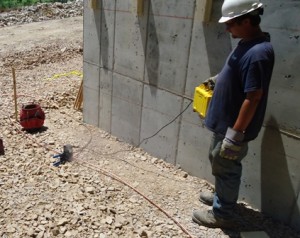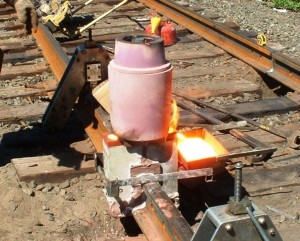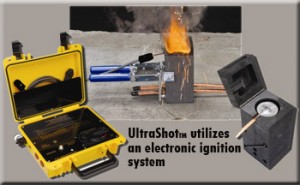
Blog
Safety Focus of the Week: Exothermic Welding
Exothermic welding (also known as cad and thermite or CAD welding) is frequently used for bonding electrical conductors for grounding. The process has an obvious risk of burn injuries and the potential to start an unintentional fire.
The process involves an exothermic reaction (reaction that yields energy) between aluminum powder and copper oxides. The reaction is triggered with a spark to a magnesium booster that develops sufficient heat to start the reaction. The molten copper rapidly reaches temperatures of around 1,400 degrees C and penetrates around the copper wire to form a bond. Exothermic welding is also used in splicing rail, only at a much larger size and different metal compositions.
The important safety concerns include:
- Proper PPE: safety glasses, gloves, leather boots
- Clearing the area of flammable materials; keep fire extinguisher handy
- Inspect Molds: clean, dry, proper size, in good condition (replace when worn).
- Protecting the materials from moisture (a drop of rain can cause a violent and dangerous reaction)
- Keep unused shots separated from the one being ignited (particularly important for railroad shots)
- Storing all welds in cool, dry locations and in properly labeled boxes.
- Keeping a copy of the MSDS sheet on file and on site.
When possible, use only totally contained electrically triggered welds such as the Cadweld Plus or Harger UltraShot. When using the old-style torch/spark-ignited powder shots and the thermite rail shots, additional PPE is necessary including face shield and welding gloves (consider jacket & chaps). Additional fire protection measures are also necessary on rail shots because of the size of the shots and since it may not be possible to completely clear the are of flammable materials (e.g., timber cross ties).
Harger UltraShot being fired off on an ECI Project
Thermite Rail Weld
Harger Ultra Shot
Revised 5/3/12 kap







